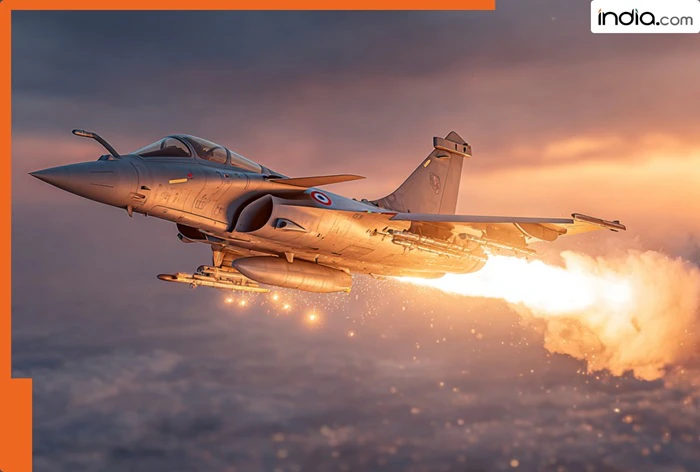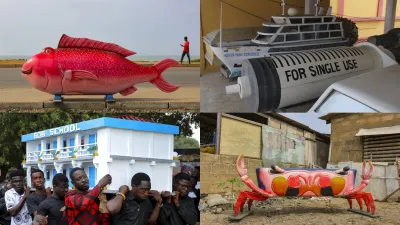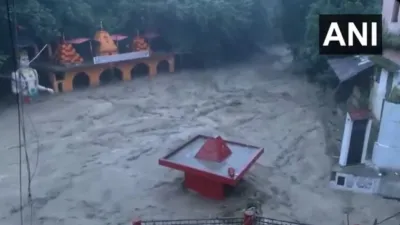By Girish Linganna
Copyright india

The Indian Air Force stands at a crossroads today. Thirteen years ago we celebrated the Rafale as our chosen champion in the MMRCA (Medium Multi-Role Combat Aircraft) competition – a massive tender to buy fighter jets for India. Back in 2012 it was indeed a formidable machine that promised to give us the edge we desperately needed. But here we are in 2025 still flying jets with technology that belongs to a different era of air combat.
The context is stark and painful. We ordered only 36 Rafale jets when we needed many more to maintain our air force strength. This shortage forced the government to launch a completely new program called MRFA (Multi-Role Fighter Aircraft) – essentially another massive tender to buy 114 additional fighters to address our falling squadron numbers. Each squadron typically has 18-20 aircraft and fewer squadrons means weaker air defense for India. But the very delays in Rafale deliveries that created this crisis now cast serious doubt on its prospects in this new tender. The irony is painful – the aircraft that was supposed to solve our problems has become part of the problem.
What makes this situation even more frustrating is the disconnect between Indian media coverage and reality. Indian newspapers and television channels often praise the Rafale as an unmatched IAF asset presenting it as the ultimate fighter jet that gives India a decisive advantage. However French media reports tell a completely different story – they reveal a disturbing eight-year delay in the crucial GaN radar upgrade that our Rafales desperately need. Thales the French company that makes these radar systems faces serious production constraints and has decided to prioritize Frances own air force first leaving Indian requirements on the back burner. This exposes our dangerous dependency on foreign schedules and priorities. The complete absence of any local upgrade facilities in India makes this strategic vulnerability even worse as we have no option but to wait for French decisions. The technical differences are substantial and have real battlefield consequences. Gallium Nitride (GaN) is a newer third-generation material used in electronics that has better properties compared to the older Gallium Arsenide (GaAs). GaN provides higher power density in smaller packages and superior heat management capabilities. This means GaN radar modules can operate at higher voltages and temperatures without failing producing much stronger radar beams that dramatically increase detection and tracking ranges. GaN radars also provide sharper image resolution for clearer target identification and much better resistance to electronic warfare attacks and enemy jamming attempts. Unfortunately our Rafales GaAs-based RBE2-AESA radar simply cannot match these advanced capabilities leaving our pilots with inferior equipment.
The geopolitical implications of this technology gap are deeply concerning. Chinas J-20 stealth fighters reportedly carry massive GaN AESA radars with approximately 2000-2200 transmit-receive modules. Think of T/R modules as tiny individual units that send and receive radar signals – the more modules you have the stronger and sharper your radar becomes allowing you to see much farther and track multiple targets at the same time. This gives Chinese pilots a clear long-range advantage in any potential conflict. Meanwhile were still operating with radar technology that while functional simply cannot compete with these modern systems. In air warfare the side that can see first and strike first usually wins. This delay in upgrading our Rafales significantly weakens Indias defensive capabilities and negatively affects the entire regional balance of power.
The problem becomes crystal clear when we look at what makes modern fighter jets effective. In todays air combat advanced electronics and sensors are absolutely crucial for survival and success. The most important sensor on any fighter aircraft is its AESA radar – this is the electronic eye that helps pilots see enemy aircraft missiles and threats from long distances. Most of the competitors in the current MRFA tender now come equipped with the latest Gallium Nitride (GaN) AESA radars which represent cutting-edge technology.
However the IAFs Rafale jets still use older Gallium Arsenide (GaAs) radar technology which is like comparing a modern smartphone to an older model – both work but one is clearly more advanced. This creates a significant performance gap that puts our pilots at a disadvantage. To understand why this matters think of GaN as a more powerful and efficient material that can generate stronger radar signals see farther and track more targets simultaneously while being more resistant to enemy jamming attempts.
The current MRFA competition exposes this painful reality with brutal clarity. Every major competitor offers more advanced technology than our current Rafales. SAABs Gripen E fighter comes equipped with the advanced GaN-based Raven ES-05 AESA radar as standard equipment. The latest Eurofighter Typhoon variants feature the sophisticated Captor-E radar system which can actually move its radar panel electronically to provide much wider coverage of the sky. Boeings F-15EX offers the powerful Raytheon AN/APG-82(V)1 AESA radar system known for its exceptional range and capability. Even Russian aircraft like the Su-35 and MiG-35 promise more modern sensor packages than what we currently operate with our Rafales. This intense global competition clearly exposes the fundamental problem facing the French fighter – its trying to compete with yesterdays technology against tomorrows threats.
These advanced radar systems provide pilots with superior battlefield awareness allowing them to spot and engage threats from much longer distances. This isnt just about technical specifications – its about our pilots lives and our nations security. Every day we delay means another day our airmen fly with equipment that may not give them the best chance to complete their missions and return safely. The French promise of a GaN radar upgrade sounds reassuring but French media reports suggest were looking at an eight-year delay. Eight years during which the regional balance of power continues to shift.
The financial aspect is equally troubling. Buying Rafale jets in 2025 means paying 20-25% more than competitors for technology that lags behind what others offer as standard. As guardians of taxpayer money and national security can we justify such an expenditure when better options exist at lower costs?
The broader picture reveals an aircraft that time has left behind. In 2012 when India first selected the Rafale in the original MMRCA competition it was genuinely considered a top modern fighter that could give us the edge we needed. But after 13 long years the battlefield has changed dramatically and the Rafale now desperately needs major technology upgrades to remain relevant. The aircrafts sensors weapons systems and electronic warfare capabilities all require significant modernization. Perhaps most importantly it lacks advanced man-machine teaming capabilities – this means the fighter jet and pilot cannot effectively work together with artificial intelligence and advanced computer systems. Modern man-machine teaming helps pilots by automatically sharing tasks like quickly spotting threats suggesting the best attack options or even controlling unmanned drones simultaneously. Without these capabilities pilots have to handle everything manually which puts them at a severe disadvantage in todays high-tech warfare environment.
The French have acknowledged these shortcomings and promised a solution in the form of the Rafale F5 version which aims to address these critical gaps. However this upgraded version will only begin development around 2030 with actual production starting several years after that. For the IAF which needs modern fighters immediately to address current threats and maintain adequate squadron strength this timeline represents an unacceptable delay that seriously compromises our combat readiness.
At the same time India is developing its own fighter jets through the Light Combat Aircraft (LCA) program. Our indigenous Tejas Mk1A and the more advanced Mk2 are important national projects for self-reliance in defense. However these programs face their own serious challenges. Delays in engine deliveries from General Electric have slowed down the Mk1A production timeline significantly. The more advanced Tejas Mk2 also depends heavily on foreign engine technology which means were still not fully self-sufficient. These indigenous aircraft fall into a different lighter category and are not direct competitors in the current MRFA tender for heavier more capable fighters. This clearly shows Indias immediate need for the MRFA program as our domestic LCA family cannot fill this specific requirement right now.
The path forward requires difficult but necessary decisions. We must evaluate each MRFA contender based on current capabilities not past reputation or future promises. Our pilots deserve aircraft equipped with the most advanced sensors and systems available today. Our nation deserves the best value for its defence investments.
Perhaps its time to consider a bold alternative that could transform Indias defense landscape permanently. Instead of remaining perpetually dependent on foreign suppliers and their unpredictable upgrade schedules India could launch its own indigenous 4.5-generation fighter program in the same category as the MRFA competitors. This would mean designing and building our own advanced fighter jet entirely in India using Indian companies and research organizations like Hindustan Aeronautics Limited (HAL) and the Defence Research and Development Organisation (DRDO). Yes such a program would require significant investment and time compared to directly buying jets from abroad but it would give us complete control over our technological destiny. We would never again have to wait eight years for critical upgrades pay premium prices for outdated technology or depend on foreign countries production priorities. More importantly it would create thousands of high-tech jobs in India develop our indigenous aerospace industry and ensure that all future upgrades happen according to Indian timelines and requirements.
The MRFA decision will shape Indian air power for decades to come. We cannot afford to make this choice based on emotional attachment to past selections or diplomatic considerations. The only factors that should matter are: which aircraft will give our pilots the best chance of success which offers the most value for our investment and which serves Indias long-term strategic interests.
The Rafale served us well when we needed it most but the battlefield has evolved. Our enemies have not stood still and neither can we. The Defence Ministry must have the courage to make the right choice even if it means acknowledging that yesterdays champion may not be tomorrows winner.
Our airmen are ready to fly whatever aircraft the nation provides them. They deserve our commitment to giving them the very best tools available. The question now is whether we have the wisdom to choose based on capability rather than sentiment and the courage to prioritize Indias security over all other considerations.
The skies above India deserve nothing less than our best judgment.
(Girish Linganna is an award-winning science communicator and a Defence Aerospace & Geopolitical Analyst. He is the Managing Director of ADD Engineering Components India Pvt. Ltd. a subsidiary of ADD Engineering GmbH Germany.)



